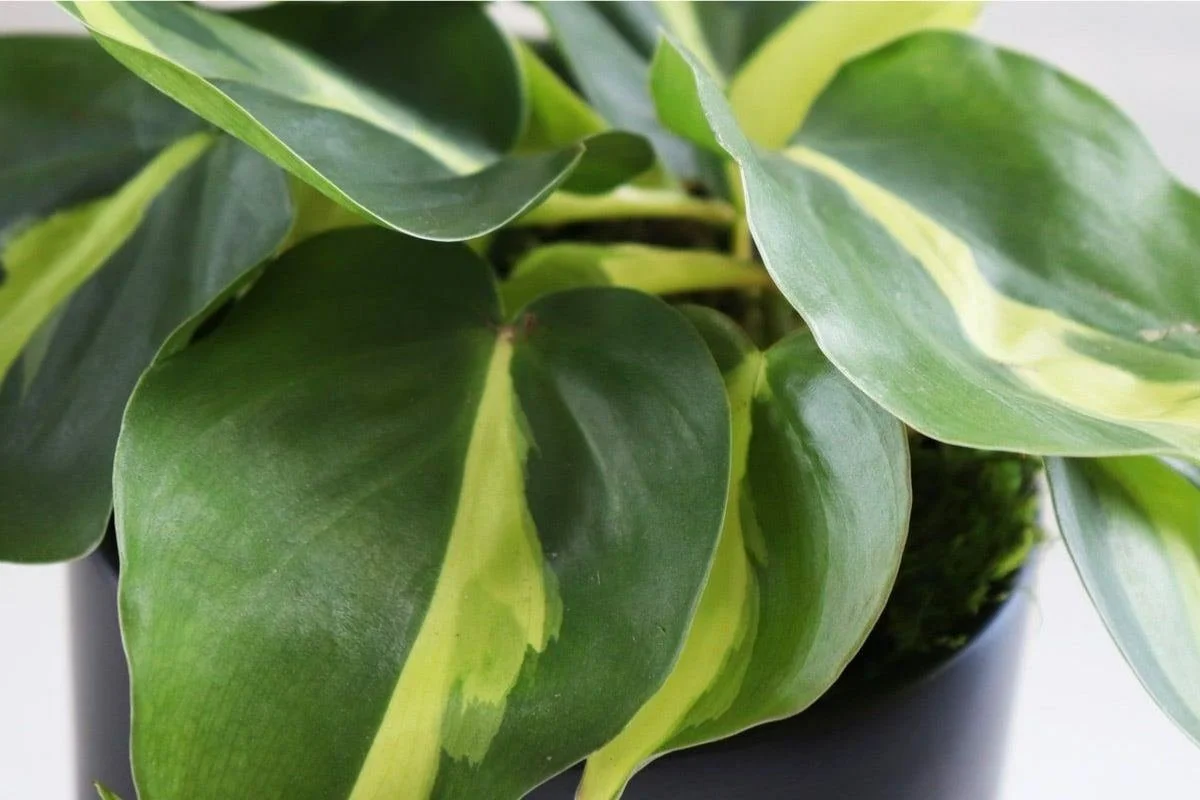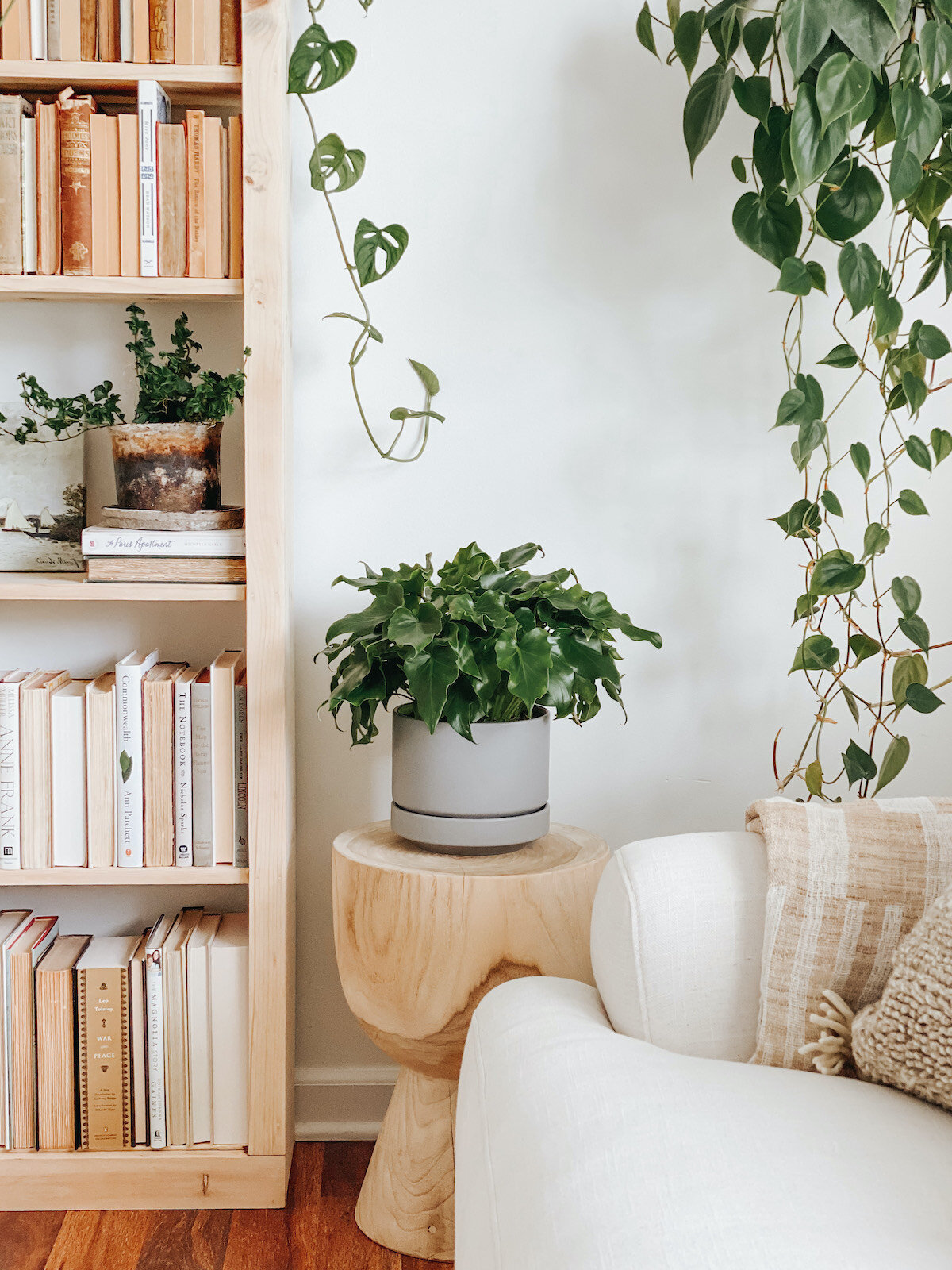With stunning texture and a covetable canopy, the Schefflera Tree, also known as Schefflera arbicola or Umbrella Tree, is a fresh and vibrant statement plant. And it gets even better: the Schefflera Tree is a potent air purifier and a low-maintenance plant species overall. Caring for a new Schefflera Tree can be a breeze, as long as you know the simplest 1-2-3’s. So read on, and learn all you need to know about caring for and growing a stunning Schefflera Tree. You’re guaranteed to love this easygoing beauty.
LIGHT
Prefers medium to bright indirect light, but is adjustable to lower light
Leaves may scorch in harsh direct sunlight
WATER
Water thoroughly when topsoil is dry, usually once every ten days or so. Avoid overwatering.
Watering schedule may be less frequent during winter months
GROWTH
In prime conditions, the Schefflera Tree is a fast grower and can grow up to 8-10 feet tall indoors
Fertilize your plant regularly during the spring and summer months.
Schefflera Tree
A gorgeous statement tree with an air-purifying punch, the Schefflera is renowned for its abundant canopy of oval leaves that grow in circular, umbrella-shaped configurations. Hardy and resilient, the Schefflera thrives in medium to bright indirect light.
Common problems with the Schefflera Tree
Drooping, yellowing leaves - overwatering
Symptom - leaves appearing to droop or appear yellow, especially on lower portion of plant
Cause -overwatering and/or not enough sunlight
Remedy - allow Schefflera Tree’s soil to dry out completely. Check the soil’s moisture through the drainage holes at the bottom of plastic nursery pot: overwatering can lead to more severe ailments like root root, which may eventually require you change the soil. If soil has a bad odor, repotting with fresh soil will be necessary as root rot has likely set in.
Discolored or browning leaves - underwatering or insufficient humidity
Symptom - leaves discolored or brown, often with crispy edges
Cause - underwatering or insufficient humidity
Remedy - Water Schefflera Tree whenever its top two inches of soil are dry to the touch and mist tree once a week or more with plant water. You can also take your Schefflera Tree out of its ceramic pot, and, keeping it in its plastic nursery pot, allow the tree to sit in a shallow dish of water for a few hours so that the roots can drink from the bottom. Let the tree drain entirely before returning it to its decorative pot.
Leaf drop - overwatering, underwatering or cold drafts
Symptom - leaves dropping, either at the bottom of the plant or from all areas of the plant
Cause - often overwatering, but underwatering and cold drafts can also cause leaf drop in Schefflera trees.
Remedy - Follow instructions above for either overwatered or underwatered Schefflera Trees, and ensure that tree is situated in a spot away from A.C’s, vents, heaters or doors and windows that frequently open or close.
How to maintain a beautiful and healthy Schefflera Tree
Your new Schefflera Tree wants to thrive, and this low-maintenance wonder plant makes it easy for you. Follow the simple tips below, and what your Schefflera Tree flourish for years to come!
Pruning - Remove dry or dead leaves all year round, but save any major pruning for the late winter or early spring, when the emergence of new growth on Scheffleras is strongest. Use sharp, clean shears and cut just above nodes at a 90 degree angle.
Staking - Mature Schefflera Trees can grow quite large and may benefit from the extra support of a plant stake or two. You can stake your tree by inserting a wooden dowel or support stick gently into the soil near the trunk, then using plant tape or twine to secure the Schefflera’s trunk(s) to the stake at intervals of 4-5 inches.
Cleaning - Take a damp cloth or sponge and gentle clean each leaf (this also helps the plant soak in more light!).
Repotting - Houseplants grow at a much slower rate than they would in the wild. Depending on the size of your plant and the density of the roots, this is nice to do every 2-3 years to provide fresh nutrients and encourage new growth.
When to repot - if the roots start to become visible outside the soil (i.e. circling around the grow pot), it is time to consider repotting your Schefflera Tree.
Pot sizing - if you want your plant to grow taller, source a nursery pot that’s 2” in diameter larger than the current pot. If you want your plant to stay the same height, you can reuse the same pot and simply change the soil.
Get your hands dirty - spread out newspaper on the floor, remove the plant from the pot and shake off as much of the old soil as possible so that you have clean roots. Place the plant in the center of the pot, add new soil and pat down firmly. Water the soil thoroughly and place the plant in an area with bright indirect light. Your plant will take 2-4 weeks to settle from the shock and adjust to its new home.
Schefflera Tree
Featuring a graceful umbrella of emerald foliage, the Schefflera Tree is a gorgeous low-maintenance statement plant and a potent air purifier. Easy to care for and even easier to love, the Schefflera Tree is adaptable to low light and needs water only sparingly.






































































